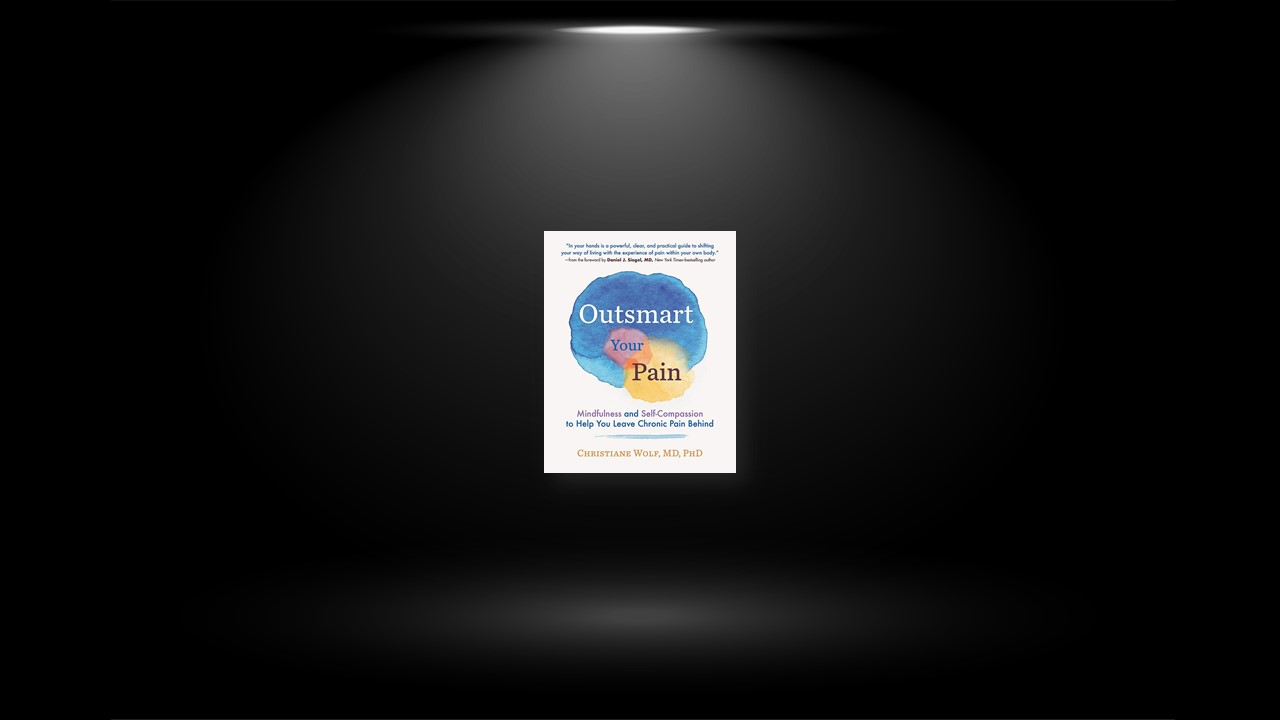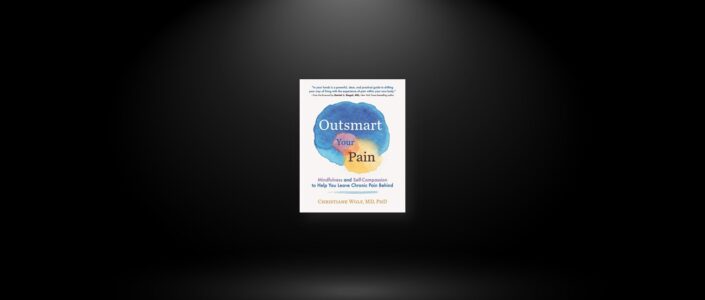You Are Not Your Pain
As human beings we tend to identify with whatever is significant in our life. We identify with our profession: “I am a carpenter . . . a lawyer . . . an entrepreneur . . . an artist” or with our marital or family status: “I am a wife . . . a father . . . an older sister . . . an only child.” Such affinity is natural and usually not a problem. It helps us move through the world, supplies a perspective that helps us make decisions, and gives us a sense of belonging.
We also do this with recurring emotional states; for example, “I’m a happy person,” “I’m a worrier,” or “I’m an anxious person,” and with physical states, like chronic pain. If you suffer from chronic pain, there is a good chance that at some point you will start thinking to yourself, “I am my pain” or “I am a pain patient.” The mind moves from “In this moment I am experiencing pain” to “I am the pain.”
One of the most helpful mental shifts that can happen for a pain patient when they start practicing mindfulness is realizing that you are not your pain. Your pain is part of your experience, but it is not defining or reducing you. When a pain sufferer gets that message, they realize they are so much more than their pain! They learn to take a step back and observe the pain instead of identifying with it—and to experience pain one moment at a time instead of becoming the pain.
Ending the War with Your Body
Mindfulness practitioners often talk about “befriending” or “hugging” your pain. For those with chronic pain, this suggestion typically elicits a look that plainly says, “You’ve got to be kidding me!” It’s true, though. Befriending the pain is healing. But who can bridge that gap starting from a place of war? It’s not realistic to move from aggression and hatred to being friends!
It might help to know that you can’t force yourself to feel kind toward your body—nor toward anything else. We don’t need to feel bad about it if befriending seems totally out of reach. We develop kindness and compassion over time, with intention, patience, and repetition.
Instead of pretending that there is no pain, mentally diminishing the severity of our symptoms, or falling into harsh self-talk, we can do something else—we can pay attention. We can acknowledge that, yes, there is pain. We don’t have to like it in order to recognize it—and we can simultaneously hold feelings of resistance, hate, anger, disgust, or overwhelm that might be there along with the pain.
After acknowledging the pain, we may eventually allow the pain—because it is already there. This permission shifts our thinking from “I need to make the pain go away in order to feel in control” to “I’m taking back control by allowing the pain to be here—for right now.”
Over time we might notice a softening in how we relate to the pain and to our body in general that can show up as accepting the pain in that moment, which doesn’t mean that we give up on searching for new ways of healing. At the same time we learn that we are not defined by the pain—that we are so much more than just this pain. We might even appreciate the body for trying so hard to heal itself.
Finding Your Internal Support Group
In self-pity, as with self-compassion, we acknowledge that what is happening to us is hard. But in self-pity, there is no space to recognize another person’s suffering. All our attention contracts around us alone and how bad things are in our own world. Self-pity compounds the sense of isolation, the feeling that we’ve been singled out in misery and pain. It almost never inspires taking action or reaching out for help. It often leads to blaming others while waiting to be rescued, and it fosters a victim mentality.
Self-compassion is the same in that it also acknowledges that our experience is painful and challenging. We approach with care and compassion, the way we would with a dear friend who was struggling: “It is SO hard to feel that way!” But self-compassion doesn’t collapse into isolation. Instead it opens into an acknowledgment that what is happening to us is part of being human.
Of course, there is nothing wrong with feeling self-pity, because it’s a natural response in this kind of situation! But there are many, many other people who know exactly what you are feeling, because they have been in the same situation. This is not to diminish your pain and how bad it is—not at all! It extends the hand of connection that says, “Yes, me, too!” I get it. I get you. And yes, it is that bad.
It can be a big relief to learn that someone else has had the same experience, tragedy, or diagnosis. It doesn’t change what you’re experiencing, but it lifts the burden of being alone with your suffering. In a mysterious way, it softens the pain to know we are not alone and that there is nothing wrong with feeling the way we do. Hello, we’re human! This recognition can be the tiny movement of the needle that moves the pain from unbearable to somewhat, somehow bearable.
Not good, not gone, but bearable. This mix of self-compassion—of realizing that we are not alone and that we can’t do it alone—and the shattering of the illusion of a perfect life or a perfect outcome is deeply transformative. We stop being so afraid of pain, be it our own pain or that of others. And we can start to be guided by Ram Dass’s beautiful reminder that we are all just “walking each other home.”
Collecting Pearls
Mindfulness teacher and neuropsychologist Rick Hanson is fond of saying: “The mind is like Velcro for negative experiences and Teflon for positive experiences.”
In other words, anything negative, stressful, or painful will be stuck in our memory, sticking out with greater strength. This is simply how our nervous system is wired. From a survival standpoint, it makes sense: If you learn quickly from a dangerous and threatening experience, you have a better chance of avoiding it or responding more effectively next time.
So what about the positive? It turns out that good experiences don’t have the same vital importance to our survival. Your life is not at stake if you don’t remember the beautiful sunset or how amazing that fresh-out-of-the-oven bread smelled. Pleasant experiences appear and then disappear, like water running through a sieve. They don’t easily leave a trace in our memory.
This results in a problem, however. Our brain keeps tabs on “how life is” through “implicit memory.” This part of memory tracks the good, the bad, and the ugly, so to speak. Think of it as an internal shelf with cookie jars for each category. Depending on how full the individual jars are, implicit memory draws a conclusion about the state of your life, which generates a feeling or belief like the ones in the following examples: “Life has its ups and downs but is still worth living” or “Life is a mix of difficult and wonderful” or perhaps” “Life is one relentless struggle, one really hard thing after the next” or “Hardly any good things ever happen to me.”
Unfortunately, suffering from chronic pain is an ongoing process of adding to the jars labeled “Pain,” “Difficult,” “Hard,” and “Fear” so much that they outweigh any pleasant events and moments that happen in the meantime, leading to a sense that there is no joy—or almost no joy—or happiness in life anymore.
Mindfulness practice can help with this challenge. One of the first mindfulness exercises the authors teach in a class is to eat a raisin—yes, just one raisin!—together. Nobody eats just one raisin, unless maybe you are two years old. We use all of our senses to explore the “raisin-ness” before we actually eat it. We share with each other what we discover. We look at the raisin, feel it, smell it, even listen to it before we pop it into our mouth and finally bite down. By that time everybody is totally engaged in the process and experiences, the explosion of flavor and texture. People often say, “That was the best raisin of my life!”
What is the takeaway message? If you pay full attention to something ordinary, it becomes extraordinary—and you will remember this. You just turned Teflon into Velcro in your memory! This kind of prolonged appreciation of one small thing is a powerful ongoing practice that, over time, can change how you experience life, regardless of the pain.
Stop Trying to Get Better
Research shows that the more relaxed and stress free we are, the faster we can heal. Stress suppresses the immune system; when we are stressed our ability to heal slows down. Here comes our paradox: Can we allow ourselves to stop working so desperately on healing in order to promote healing? If healing might not be possible, can we still learn to be OK wherever we are?
This brings us to the interesting question of what we actually mean by healing? Is it the same as being cured? The philosopher S. Kay Toombs, who herself suffered from multiple sclerosis, asks us to consider healing as a restoration of wholeness, which may include the curing of the disease but is not limited to it. Wholeness relates to the ability to preserve one’s integrity in the face of the pain or the disease. We can choose to live well in the presence of our condition, rather than being defined by its absence.
Zen teacher Ezra Bayda expresses a similar idea when he says, “We often think that being healed means the illness and the pain will go away. But healing doesn’t necessarily mean that the physical body will mend. . . . Healing is not just about physical symptoms. Many people heal and still remain physically sick or even die. Many who become physically well never really heal. Healing involves clearing the pathway to the open heart. . . . To heal, to become whole, we no longer identify with ourselves as just this body, as just our suffering. We identify with a vaster sense of being.” That sense of being that we all possess is focused not on a future condition that we long to have but on our present reality.
Regardless of whether or not you have pain—you can live your life to the fullest right here, right now. There’s no need to stop planning to take care of your future, but may you do so with openness and ease, staying mostly here, in the present moment, and making the best of it.


